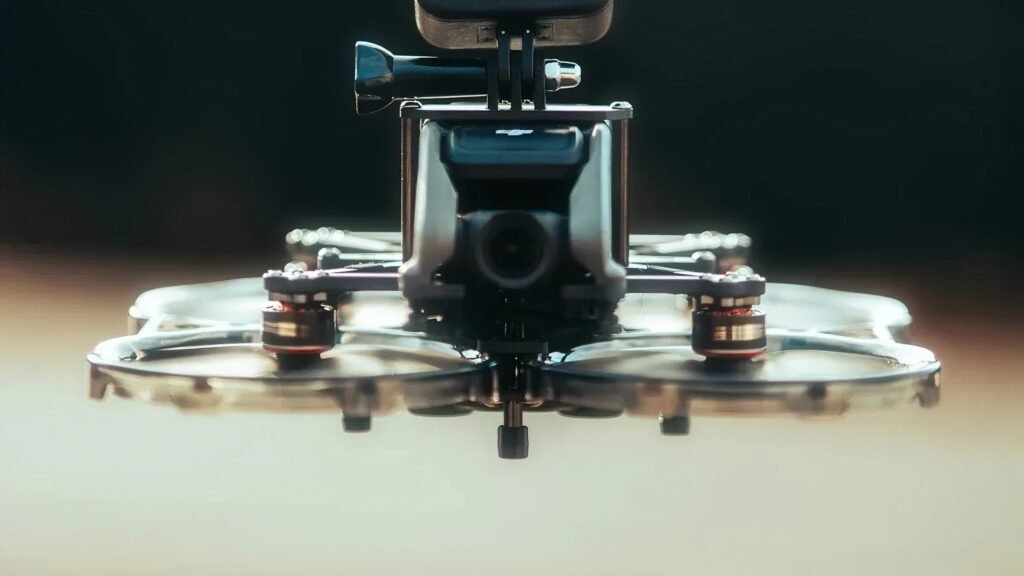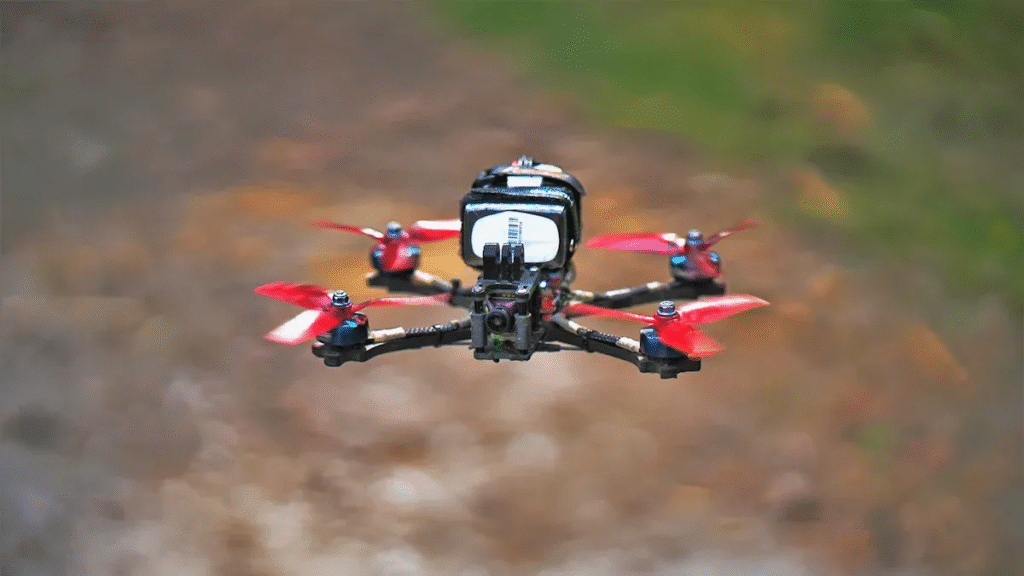Most drone motors use DC, not AC, because you need precise control, strong starting torque, and reliable performance. Brushless DC motors deliver high efficiency and reduce friction, so your drone benefits from longer flight times and lower battery consumption. Their compact and lightweight design makes them ideal for drones, especially when space and weight matter. You get improved durability and a better power-to-weight ratio, which supports demanding drone applications.
AC vs DC Motors

How AC Motors Work
You will find that AC motors operate on the principle of rotating magnetic fields. The stator creates this field, and the rotor follows it, producing motion. Nikola Tesla’s discovery of rotating magnetic fields made this possible. In single-phase AC motors, a main and auxiliary winding create a phase shift, while three-phase motors use multiple phase-shifted currents for smooth, constant torque. Synchronous motors match the supply frequency, offering precise speed, while induction motors rely on electromagnetic induction for rotation. These designs make AC motors reliable for steady, high-power tasks, such as industrial fans or pumps. However, AC motors require a variable frequency drive (VFD) for speed control, which adds complexity and can introduce electrical noise.
How DC Motors Work
DC motors convert electrical energy into mechanical rotation using the interaction of magnetic fields from the stator and rotor. The stator provides a fixed magnetic field, while the rotor, powered by direct current, rotates due to the Lorentz force. In brushed DC motors, brushes and a commutator reverse the current, ensuring continuous rotation. Brushless DC motors, which you often see in drone motors, use electronic controllers to switch current and eliminate the need for brushes. This design increases efficiency and reduces maintenance. You can control speed and direction easily by adjusting voltage or using electronic feedback systems. These features make DC motors ideal for applications that demand precise control and quick response, such as drones and robotics.
Key Differences
When you compare AC and DC motors, you notice important differences that affect performance and suitability for drones.
| Feature | AC Motor Characteristics | DC Motor Characteristics (including Brushless DC) |
|---|---|---|
| Power Source | Alternating current (common in homes/factories) | Direct current (batteries, converters) |
| Efficiency | High at steady speeds | High at variable speeds; brushless types very efficient |
| Speed Control | Needs VFD for steady control | Managed by electronics (PWM, FOC) for precise control |
| Maintenance Needs | Lower (no brushes) | Higher for brushed; brushless DC motors need less upkeep |
| Durability | Long lifespan, simple design | Shorter for brushed; brushless DC motors are more durable |
| Applications | Industrial, HVAC, steady power | Drones, electric cars, portable devices |
- AC motors excel at steady, high-power tasks but lack the precise speed control you need for drones.
- DC motors, especially brushless types, offer high efficiency, quick starting torque, and easy speed control, making them the top choice for drone motors.
Types of Drone Motors

Brushed Drone Motors
You may encounter brushed drone motors in entry-level or toy drones. These motors use brushes and a commutator to switch the direction of current inside the motor. When you power the motor, the brushes make physical contact with the commutator, causing the rotor to spin. This design is simple and cost-effective, making it attractive for budget-friendly drones.
However, brushed motors have some clear drawbacks. The friction from the brushes generates heat and causes wear, which shortens the motor’s lifespan. Most brushed motors last between 1,000 and 3,000 hours before needing replacement. You will also notice that these motors require more frequent maintenance and produce more noise during operation. The extra heat reduces battery life and limits efficiency, so flight times are shorter compared to brushless options.
Note: Brushed motors offer a lower upfront cost, but you will spend more on maintenance and replacements over time.
Brushless Drone Motors
Brushless drone motors have become the standard for most modern drones. You will find these motors in racing, commercial, and professional UAVs. Brushless motors use electronic commutation, which means they rely on electronic controllers to switch the current instead of physical brushes. This design eliminates friction and wear, resulting in higher efficiency and much longer lifespans—often tens of thousands of hours.
You benefit from several advantages when you choose brushless motors:
- Minimal energy loss due to the absence of friction, which leads to higher efficiency and less heat.
- Greater durability, since there are no brushes to wear out.
- Higher torque and speed, making these motors ideal for demanding drone applications.
- Quieter operation, which is important for noise-sensitive environments.
| Feature | Brushed Motors | Brushless Motors |
|---|---|---|
| Cost | Lower initial cost | Higher upfront cost |
| Efficiency | 75-80% (lower due to friction) | 85-90% (minimal energy loss) |
| Maintenance | Frequent (brush wear) | Minimal (no brushes) |
| Lifespan | 1,000-3,000 hours | Tens of thousands of hours |
| Torque | Sufficient for basic use | High, ideal for payloads and racing |
| Noise | Louder | Quieter |
Brushless motors dominate the drone market because they convert more electrical energy into mechanical power. This means you get longer flight times and better performance. The market for electric motors in drones continues to grow, driven by technological advancements and the need for efficient, reliable propulsion systems.
Why DC Motors Are Used
You will see DC motors, especially brushless types, in almost every drone for several reasons. Brushless DC motors deliver high efficiency and low maintenance, which are critical for long-duration flights. These motors allow your drone to carry heavier payloads while maintaining precise control and stability. Counter-rotating brushless motors further improve stability and reduce unwanted torque effects, which is essential for agile movements and safe operation.
The technical advantages of DC motors include:
- High efficiency, which extends battery life and flight time.
- Precise speed and torque control, allowing for smooth maneuvers and stable hovering.
- Low maintenance, reducing downtime and long-term costs.
- Superior durability, supporting demanding applications in commercial, military, and industrial sectors.
Market research shows that brushless motors, including outrunner and inrunner types, lead the industry. Innovations focus on lightweight designs, smart integration, and improved thermal management, all of which support the evolving needs of drone users.
The diversity of drone motors reflects ongoing innovation and the importance of selecting the right motor for your application. When you choose a drone, understanding these differences helps you make informed decisions about performance, reliability, and long-term value.
Performance and Maintenance
Efficiency and Control
You need motors that deliver both high efficiency and precise control for your drone. DC motors, especially brushless types, excel in these areas. They convert more battery power into thrust, which means longer flight times and less wasted energy. You can adjust their speed quickly and accurately using electronic controllers. This level of control helps you perform stable hovering, sharp turns, and smooth landings.
Recent advances in sensor technology and machine learning have improved how you manage battery and motor performance. Synthetic sensor data, created with advanced algorithms, allows engineers to predict motor behavior more accurately. This leads to better mission planning and safer flights, as you can anticipate how your drone will respond in real time. Accurate torque and power measurements also help you select the right motor for your needs, ensuring optimal lift and maneuverability.
Durability and Upkeep
You want your drone motors to last as long as possible with minimal maintenance. Brushless DC motors offer this advantage. They have fewer moving parts and no brushes to wear out, so you spend less time on repairs. However, you should still follow a regular maintenance routine to keep your motors in top shape:
- Inspect motors for signs of wear, dirt, or overheating.
- Clean with compressed air or a soft brush to remove debris.
- Replace motors if you notice unusual noise, vibration, or power loss.
- Update firmware and software to maintain peak performance.
- Avoid flying in extreme conditions like dust, moisture, or high temperatures.
For heavy-lift drones, you will find motors built for rugged use and higher torque. These motors support larger payloads and longer flights, but they also require careful inspection and professional servicing.
Comparison Summary
The table below highlights the main differences between AC and DC motors for drones:
| Criteria | AC Motor | DC Motor (Brushless) |
|---|---|---|
| Efficiency | High at steady speeds | High at varying speeds |
| Control | Needs extra devices for speed control | Simple, direct electronic control |
| Starting Torque | Moderate | Strong, ideal for quick takeoff |
| Maintenance | Low (no brushes) | Very low (no brushes in brushless types) |
You benefit most from DC motors because they combine strong starting torque, easy control, and low maintenance. These features matter for drone users who want reliable performance, longer flight times, and less downtime.
Why Not AC Motors?
Technical Barriers
You face several technical challenges when you try to use AC motors in drones. AC motors require alternating current, but most drones rely on batteries that supply direct current. To power an AC motor, you would need a complex inverter system to convert DC from the battery into AC. This extra hardware adds weight and takes up valuable space inside your drone.
AC motors also need precise frequency control for speed adjustments. You must use a variable frequency drive (VFD) to manage this. VFDs are bulky and can introduce electrical noise, which may interfere with your drone’s sensitive electronics. You want your drone to respond quickly to control inputs, but AC motors often have slower response times compared to brushless DC motors. This delay can make your drone less agile and harder to fly, especially during rapid maneuvers.
Tip: If you want fast, accurate control and longer flight times, you should avoid AC motors due to these technical barriers.
Impact on Drone Design
When you choose AC motors, you change the entire design of your drone. You need to allocate more space for inverters and cooling systems. This extra equipment increases the total weight, which reduces flight time and limits how much your drone can carry. Heavier drones require more lift, so you need larger propellers or more powerful motors, which further complicates the design.
You also face challenges with maintenance and reliability. AC motor systems have more components that can fail, such as inverters and VFDs. You may spend more time troubleshooting and repairing your drone, which increases downtime and costs. Most drone manufacturers prefer brushless DC motors because they simplify the design, reduce weight, and improve overall performance.
| Factor | AC Motor Impact | Brushless DC Motor Impact |
|---|---|---|
| Weight | Higher (inverters, VFD) | Lower |
| Complexity | More components | Simpler |
| Control Response | Slower | Faster |
| Flight Time | Reduced | Extended |
Note: You get better efficiency, control, and reliability when you use brushless DC motors instead of AC motors in your drone.
You now know that most drone motors use DC power, with brushless designs leading in performance and control. This choice gives you easier control, strong starting torque, and simple maintenance. When you understand the differences between motor types, you make smarter decisions about your drone’s reliability and efficiency. Always check the motor type before you buy or service a drone to get the best results.




